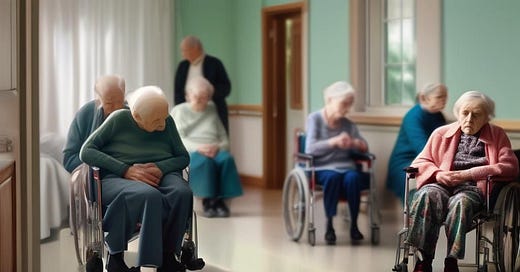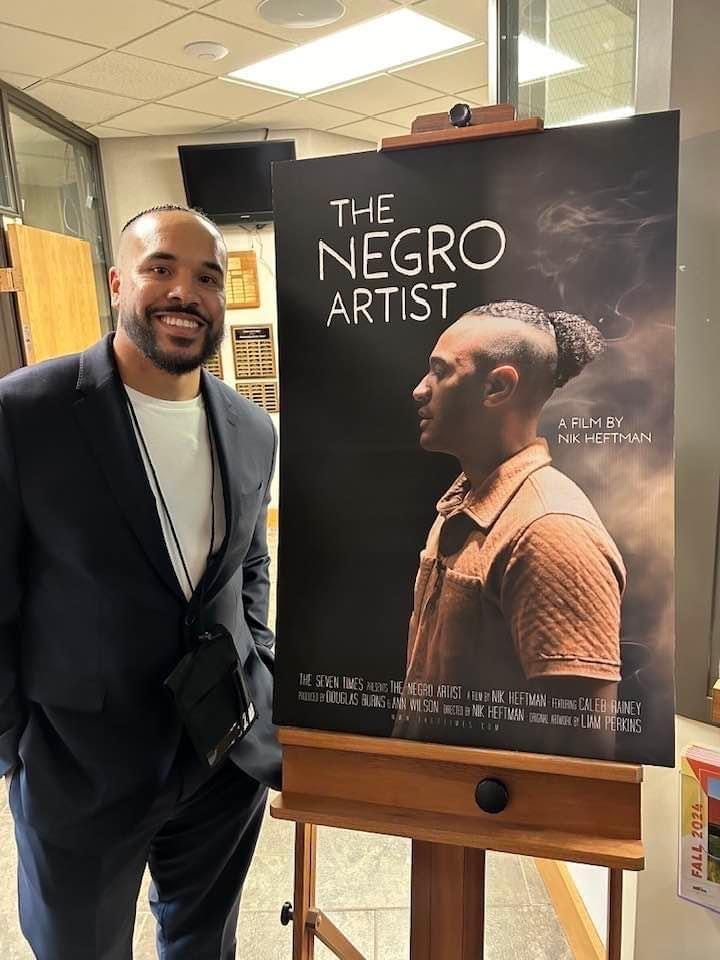A cruel Iowa outrage: Nursing home caregivers (overwhelmingly women) often paid less than fast-food workers
By MARY TIMP
Guest Columnist
DES MOINES, Iowa —
Most people don’t want to be in a nursing home. That’s especially so because some of our homes are scary. Not Halloween-fun scary, but dangerously scary.
In fact, nearly every week, we learn of a nursing home somewhere in Iowa being cited for providing poor care. I’m not talking about things like the soup being watery or served cold. I mean egregious stuff like people who need help to turn over in bed but are left in place for so long they develop bed sores that result in open wounds that become infected, and in some instances have resulted in death.
Other cases involve people falling and being badly hurt when the falls could have been averted.
More common is people needing help to stand and walk or use the bathroom but whose call for help goes unanswered for long periods of time.
Yes, these things happen in Iowa, in homes all over the state -- in our larger cities and in small communities. Poor care knows no geographic boundary.
There are hundreds of nursing homes in Iowa. Many are doing a good job, but others are abysmal. Is there a secret sauce that separates the “good” from the “bad”? One key ingredient is the staff, the people technically called direct-care givers. Usually, we call them nurse aides or a similar name.
We have too few of these care givers, and they’re almost universally poorly paid. It’s common – and accurate – to say they make less than fast-food workers. This, despite them having a lot more responsibility and training.
Besides how poorly they’re paid, what else is there to know about our care givers? For starters, if you’re a resident of a nursing home or visit someone in a home, you see that care givers are overwhelmingly women.
Other features of this workforce are that, given their poor pay, they often must work more than one job or multiple shifts to make ends meet. It doesn’t take a rocket scientist to understand that care givers in these circumstances are often exhausted and stressed, so not working up to the standards we’d wish them to meet. Result: Poor care.
Care givers are also big users of social supports: They shop at second-hand stores for their clothes and those of their children; they often qualify for SNAP (food stamps) and subsidized housing and childcare, when they can find them.
Over the years, when I’ve talked with policy makers about this situation, some (Democrats AND Republicans) flippantly remark that care givers will “work their way up.” That’s not true.
There is no “working your way up.” There is no career ladder. It’s true that some people “try out” health care by working in a nursing home to see if they want to train to be a nurse or another health-care professional. But that’s very few people. And “incentivizing” people to leave care giving by paying them little only results in the massive turnover we see in this workforce. The result, again: Poor care.
As a public information officer for the state, with stints at both the then Department of Inspections and Appeals and the Department of Human Services, I read dozens of facility inspection reports to prepare to answer questions from reporters and the public. (You should know that unlike in some states, Iowa is fortunate to have registered nurses as inspectors; they know their stuff.)
What I learned from that experience is how pivotal care givers are to the success of a nursing home: Inevitably, the homes cited for poor care are those that don’t have enough staff to do the work.
My mother was a nurse aide in a rural Iowa nursing home for 23 years. She began at the age of 52 after my father, a farmer, died suddenly during the farm crisis. Mom hung onto the farm by renting the land. And she worked “off the farm,” as they say, in a local nursing home plus she was a substitute rural mail carrier. She was 75 when she finally felt comfortable enough to retire. Hers is not a unique story. Many care givers are in circumstances in which they find work in their communities to continue to live where they are, or they don’t have the flexibility to take on other work. We shouldn’t look down on them. We need these people. And many, like my mother, see their work as a profession.
Some people are saying we need different care models. I agree. But let’s remember that we’ll always need care givers no matter the models we choose.
Right now, what we desperately need to improve care in our nursing homes – to eliminate the scariness -- are care givers who enjoy the work, get satisfaction from it and want to stick with it.
We should treat them like the professionals they are by hiring enough of them and paying them what they deserve.
ABOUT THE AUTHOR
Mary Timp is a lifelong Iowan who lives in Des Moines. She's worked for newspapers, state government and publishing and marketing firms. As a 70-year-old, she anticipates that, like most people, there will come a time when she'll need the help of care givers. She hopes they will be fairly compensated.
(Douglas Burns, founder of The Iowa Mercury and a fourth-generation Iowa journalist from Carroll, is a member of the Iowa Writers’ Collaborative. Read dozens of the most talented writers in Iowa in just one place. The Iowa Writers' Collaborative spans the full state. It’s one of the biggest things going in Iowa journalism and writing now — and you don’t want to miss. This collaborative is — as the outstanding Quad Cities journalist Ed Tibbetts says — YOUR SUNDAY IOWA newspaper. )
Save the Date for a Holiday Party! Friday, December 13, 2024, 5-8 p.m.
The Iowa Writers Collaborative will host a party at the Harkin Institute on the Drake University campus in Des Moines, Iowa. The event will include appetizers and a short program. It’s a great opportunity to meet some of your favorite writers and visit the state-of-the-art home of the Harkin Institute for Public Policy & Citizen Engagement.
Please become a paid subscriber to any of our columns, including this one, and RSVP here. A donation will be accepted at the door for spouses or guests. If you’re traveling, see hotel information on the RSVP form.
Details:
When: 5-8 p.m. Dec. 13, 2024.
Where: Harkin Institute, 2800 University Ave., Des Moines.
What: Appetizers, a short program, and great conversation.
Go see Iowa filmmaker Nik Heftman’s documentary “The Negro Artist” in Des Moines or Iowa City (other locations announcing soon)
In another Iowa Mercury piece Douglas Burns writes about fellow Iowa Writers' Collaborative member Nik Heftman's documentary. "The Negro Artist" will be shown at numerous theaters and locations around the Des Moines metro area in coming months. It's also showing at 7 p.m., Dec. 11 at Film Scene in Iowa City. For showtimes in Iowa and across the nation please visit The Seven Times website. — Or click below.





thank you Mary and Doug. Tom McGiverin and Dean Lerner helped motivate me to add: Regulation helps to at least cure weaknesses in capitalism by setting boundaries that protect workers, consumers, and the environment, ensuring fair competition and preventing monopolies. It creates accountability, addressing the excesses of profit-driven motives that can harm society. Properly implemented, regulation maintains a balance between economic growth and social responsibility, fostering sustainable development. As a former state agency head, I confess regulation is imperfect. Under Reynolds, the worse of the nursing home industry is unfettered by laws and responsibility.
I would like to read Doug, Mary and Dean's comments on how to distinguish the senior living centers that do an excellent job as opposed to the bad guys.
Another issue is abuse. Many states allow Nanny cams. Not Iowa.